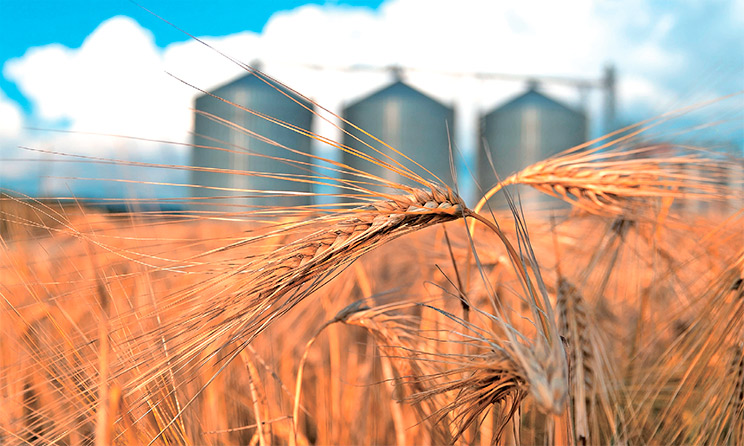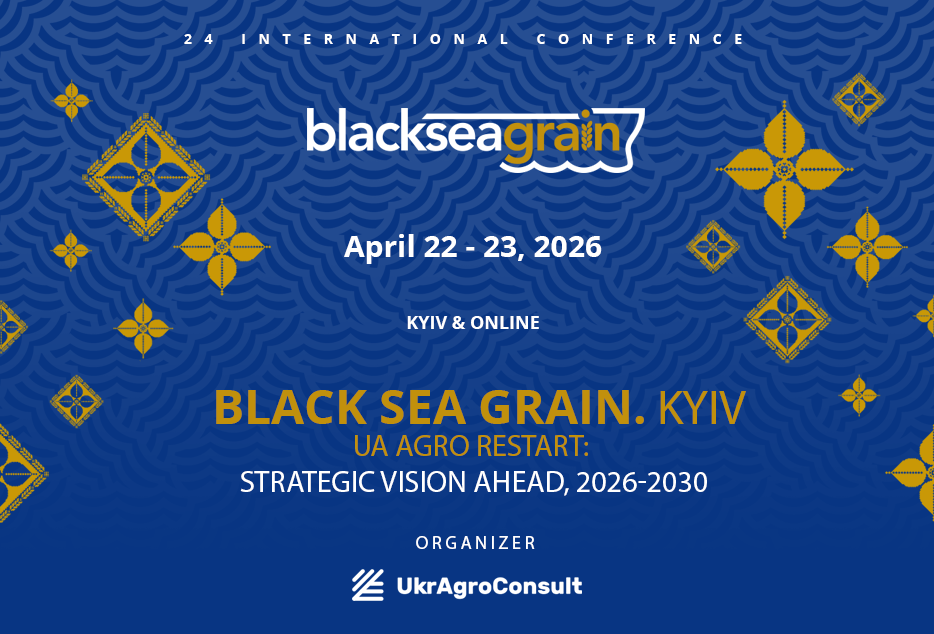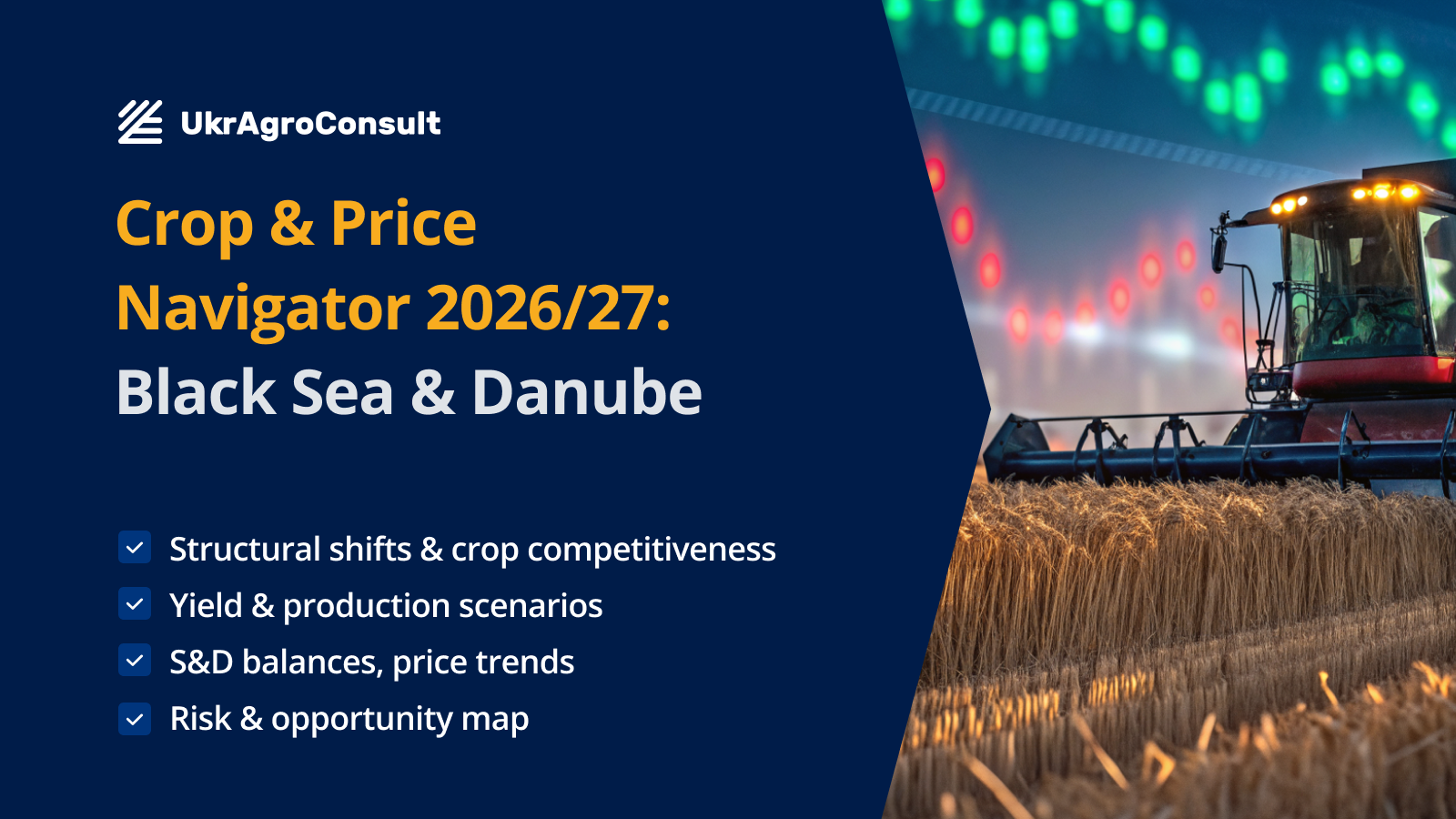The export of Ukrainian agricultural products reminds us of the “asterisk” problem, where “x” is politics and “y” is economy

Amid the European Commission’s decision to ban imports of Ukrainian grains and oilseeds, domestic agricultural producers’ ability to sell their products abroad has significantly decreased.
Exports of Ukrainian agricultural products resemble an asterisk problem, where x is politics and y is economics. However, unlike pure mathematics, in the case of selling Ukrainian grain abroad, the answers may be unexpected.
It would seem that we are already accustomed to the issue of extending the grain corridor due to constant blackmail by Russia. However, the European Commission’s decision to temporarily ban imports of four types of agricultural products from Ukraine in five Eastern European countries, provided that transit is maintained, was somewhat unexpected. After all, just a few days later, the decision was made to extend the duty-free regime for Ukrainian goods for a year. Moreover, protests in some countries amid the elections forced the EC to agree to violate the principles and norms of the EU single market. However, if this decision had not been made, each of the countries that had previously unilaterally banned imports of agricultural products from Ukraine would have significantly expanded the list of goods.
The Ukrainian Farmer talked to Elizaveta Malyshko, grain market expert at UkrAgroConsult, about the prospects for Ukrainian agricultural products in the new environment.
– For Ukraine, it is very important to extend the duty-free regime introduced by the EU for Ukrainian agricultural products and other domestic goods. It is also crucial to extend the operation of the Solidarity Roads, as the end consumers of our corn and wheat are not Poland, Bulgaria or Hungary, but Italy, Spain, Germany and others.
– Despite the positive decision to extend the duty-free regime, the EC decided to ban four agricultural crops in five EU countries, provided that transit is maintained. What are the consequences of this decision?
– In fact, for us, as grain producers and exporters, the bans that have now been centrally approved by the European Commission mean that we cannot import certain agricultural products to five countries.
As traders have explained to me, when we exported grain to Poland, this country was not always the final consumer. Usually, a Polish trader would clear the grain through customs, and then it would go to the end consumer in Western Europe. How this will happen now is still unknown. For example, Eastern European countries that have banned imports of Ukrainian agricultural products emphasize the need to escort our cargoes in convoys. They say that they will abandon them for now, and instead install trackers that can be used to track the movement of cargo across the country and make sure that the grain is arriving at the ports.
However, all these bans lead to lower prices on the Ukrainian domestic market. In particular, following the temporary ban on imports of certain crops in five EU countries and uncertainty over the extension of the grain corridor, wheat prices in our country fell by UAH 400, meaning that the price of grain fell by 10-15% in just 10 days. But as prices on the Ukrainian market have fallen, so have prices for Polish agricultural products.
– However, European farmers will receive compensation…
– What did Polish farmers appeal to? At the beginning of the season, realizing that Ukrainian farmers are not able to freely export grain, despite the fact that grain prices have soared, they focused on their own food security. However, the fact that Polish farmers did not sell grain when prices soared was a business decision of each individual enterprise. The losses or lost profits of European farmers in the distribution of subsidies will be dealt with. The European Commission will now spend 100 million euros to help them. But the losses or lost profits of Ukrainian farmers are an open question.
– Due to the import ban in Eastern Europe, Ukrainian agricultural producers have faced many problems.
– Yes. We are currently seeing queues at the borders, and there are actually much more problems than it seems. There is great hope for the electronic queue, which should streamline the situation. There are problems with the availability of customs licensing zones where Ukrainian grain should be unloaded from railcars to be transported further on the European narrow gauge. There is also uncertainty about the customs clearance procedure and other “rules of the game.” There have been precedents when grain that was already in another country was returned to Ukraine, and then it had to be cleared through customs and even paid VAT, as it now became an import, regardless of its origin. In any case, all these factors increase the cost of the logistics component and negatively affect the domestic price of grain, and as a result, the income of agricultural producers.
– Traders say that the grain that has already been imported to Eastern Europe cannot be sold, even despite the signed contracts. Buyers from Western European countries, with whom they had previously had good relations, are also refusing to buy grain, citing the allegedly poor quality of the grain, although this problem did not exist in previous years.
– If we take only the market component, we harvested corn under rather unusual conditions, mostly in winter. Therefore, there could be some quality problems, especially at the end of the season. After all, higher quality grain is sold first. However, given the current grain prices and the high cost of logistics, exporters were unlikely to ship grain of questionable quality abroad. Despite all the difficulties, there are choices and offers.
And if a company has signed export contracts and cares about its reputation, it is unlikely to ship grain of inadequate quality. Therefore, the issue of grain quality may become one of the levers of influence to restrict imports from Ukraine.
– Could the phrase in the official EC communiqué on the possibility of extending the ban on imports of agricultural products from Ukraine be one of these tools?
– Of course, the European Commission reserves the possibility, depending on the price situation, the election results and the new harvest, to extend the ban on imports from Ukraine while maintaining transit.
– But we are also expecting a new harvest, and we have a large amount of carryover stocks.
– This is a rather complicated issue. We don’t know exactly how much of last year’s harvest remains in the temporarily occupied territories, how much was destroyed in the fighting, how much Ukrainian grain was stolen by Russia, etc. According to the balance sheet that UkrAgroConsult works with, Ukraine is currently left to export up to 1-1.5 million tons of wheat and up to 8 million tons of corn. It is clear that these are reference figures, but there is no complete understanding of the actual amount of grain on the gray market. In other words, there are leftovers, and if the grain corridor is shut down, it is not known what to do with them. Of course, we can put the grain in storage, but this is an additional cost.

In addition, in just two months we will receive a new barley and wheat harvest. According to our estimates, in 2022/23 MY Ukraine will export about 44 mln tonnes, and in 23/24 MY – only 32 mln tonnes. This means that logistical pressure will decrease, but it will be quite difficult without the grain corridor. Before the full-scale war, 90% of Ukrainian agricultural products were exported by sea. It was more profitable to transport grain to Italy and Spain through the deep-water ports of Greater Odesa than by land, even if agricultural production was located in western Ukraine.
– At the Brussels Economic Forum, Deputy Economy Minister Taras Kachka estimated the losses of Ukrainian agricultural producers due to the Polish government’s decision to ban imports at $143 million a month.
– “When the price on the domestic market has dropped by 400 UAH/t in ten days, these are real losses. In addition, there are additional costs for logistics and traveling to prove the quality of the grain. Most likely, the new conditions will affect medium-sized farmers rather than large ones, as agriholdings always use international travel agents.
– The EC’s decision calls for an investigation into the quality of Ukrainian grain shipments. But such investigations can take years…
– We need to be prepared for anything, taking into account our previous and current experience. The worst-case scenario is a ban on sunflower oil imports, as quite large volumes go through Europe. Moreover, next year many farmers will rely on sunflower oil, as this oilseed is in demand even in our country. Much has always depended on the diplomatic skills of our ministries. And now it is even more so.
– Ukraine intends to become a member of the EU. But is the agro-industrial complex of the Eastern European countries that initiated the ban on imports of Ukrainian grain ready not only to see our active presence in the market, but also to compete with our agricultural producers, who do not always have vertically integrated agriculture and storage capabilities?
– They may be ready for Ukraine’s European integration. However, many of them are guided by the experience of the last 5-6 years, when the lion’s share of our exports went through deepwater ports. That is why Europeans did not consider it necessary to adjust their logistics infrastructure to Ukrainian flows. The infrastructure in many Eastern European ports was set up for minimal export shipments. And their railroad tracks are not adapted to the powerful grain exports that Ukraine demonstrates, when in the best years up to 50 million tons of our agricultural products were exported abroad. They didn’t need all this, because the logistics were built to meet domestic needs. So now both Ukraine and Europe have to adapt to the new conditions. In particular, Ukrainian commercial companies are joining projects on the borders with the EU, including the construction of terminals in the territories of the Commonwealth.
– And this is a fairly profitable investment, given that the terminals can accept grain from our “wide” gauge and transfer it to the “narrow” gauge.
– In fact, those who have invested in logistics amid massive losses for farmers will even benefit in the short term. If 5-6 years before the full-scale invasion, the main profits were accumulated by agricultural producers, now they have moved to the logistics sector. However, I think the situation will turn around again next season. After all, we have reduced the area under wheat, and many are thinking about the feasibility of sowing corn. Accordingly, the volume of grain transportation will also decline. Therefore, companies that have focused on logistics during the full-scale war will not receive the profits they expect.
Judging by the news coming from European meteorological agencies, if the situation with the drought and subsequent crop loss is repeated, next year the EU will not just lift restrictions on imports of agricultural products from Ukraine, but will fight for our agricultural producers.
– We cannot ignore the issue of extending the grain corridor.
-I am cautiously optimistic about this issue. After all, all parties to the negotiations are interested in extending it, even Russia, which is trying to push certain decisions in its favor. Moreover, a large amount of grain has accumulated there: partly its own harvest and partly stolen Ukrainian grain. And the fact that Ukraine is limited in imports expands the geography of grain exports for Russia, particularly to African countries.
Turkey also has its own interests, and the UN is concerned with food security. So there are more stakeholders, and they have quite powerful positions. So I think that eventually the parties will come to an agreement. Another issue is the effectiveness of the inspection commissions due to the delay of inspections by the Russian side, which comes up with any excuse, from the lack of boats to conduct inspections to the need to celebrate Catholic, Orthodox, and Muslim holidays. Therefore, in the conditions of the “grain corridor” we will constantly face delays in the work of inspections. This is the reality we will have to live with for the time being.
– Given the limited exports through the solidarity routes and the grain corridor, do we have an alternative other than the Danube ports?
– Only the Danube is stable and reliable. And the queues that are currently observed at the entrances to Reni and Izmail are direct evidence of this statement. However, 90% of agricultural products from the Danube ports go through Constanta. So, ultimately, everything is currently centered on Europe.
– Is there any potential to expand the capacity of these ports?
– At the moment, I think that the Danube ports are already operating at their capacity limit, as evidenced by the queue of ships in the Sulim Canal. Of course, to increase capacity, we need to dredge the river annually, which is usually done by the state.
Ships with a maximum load of 5,000 tons can pass through the Danube, which are shipped directly to trucks or railcars. And even if banks are placed there, they are no more than 5 thousand tons.
Read also
Ukraine harvest update: Corn 89% complete, sunflower seeds 93%
Saudi Arabia strengthens its position in global grain markets
Kazakhstan may limit potato exports due to crop failure in Russia
Port investments by China in Latin America are reshaping the soybean market
EU introduces “carbon border tax”
Write to us
Our manager will contact you soon



